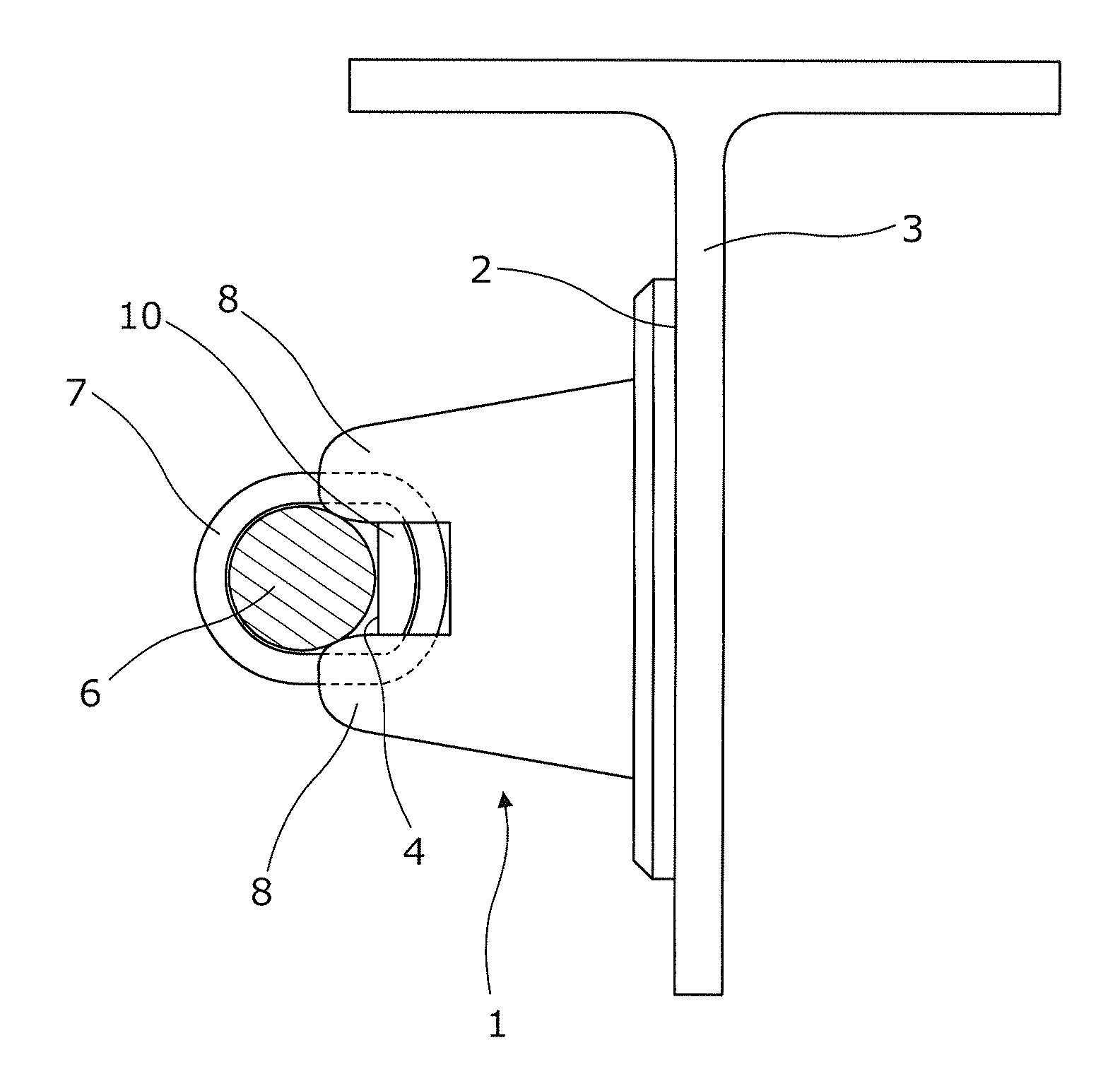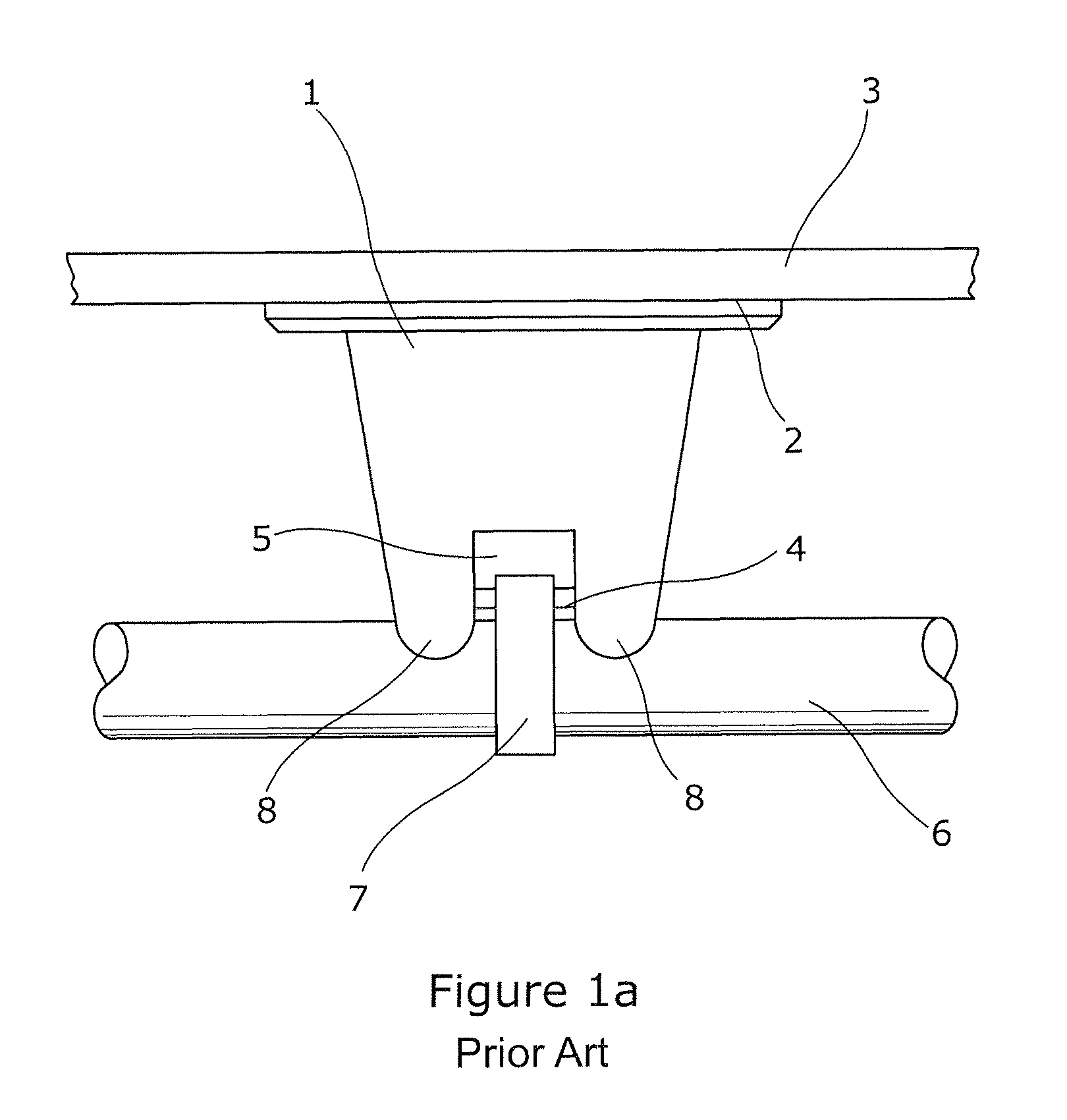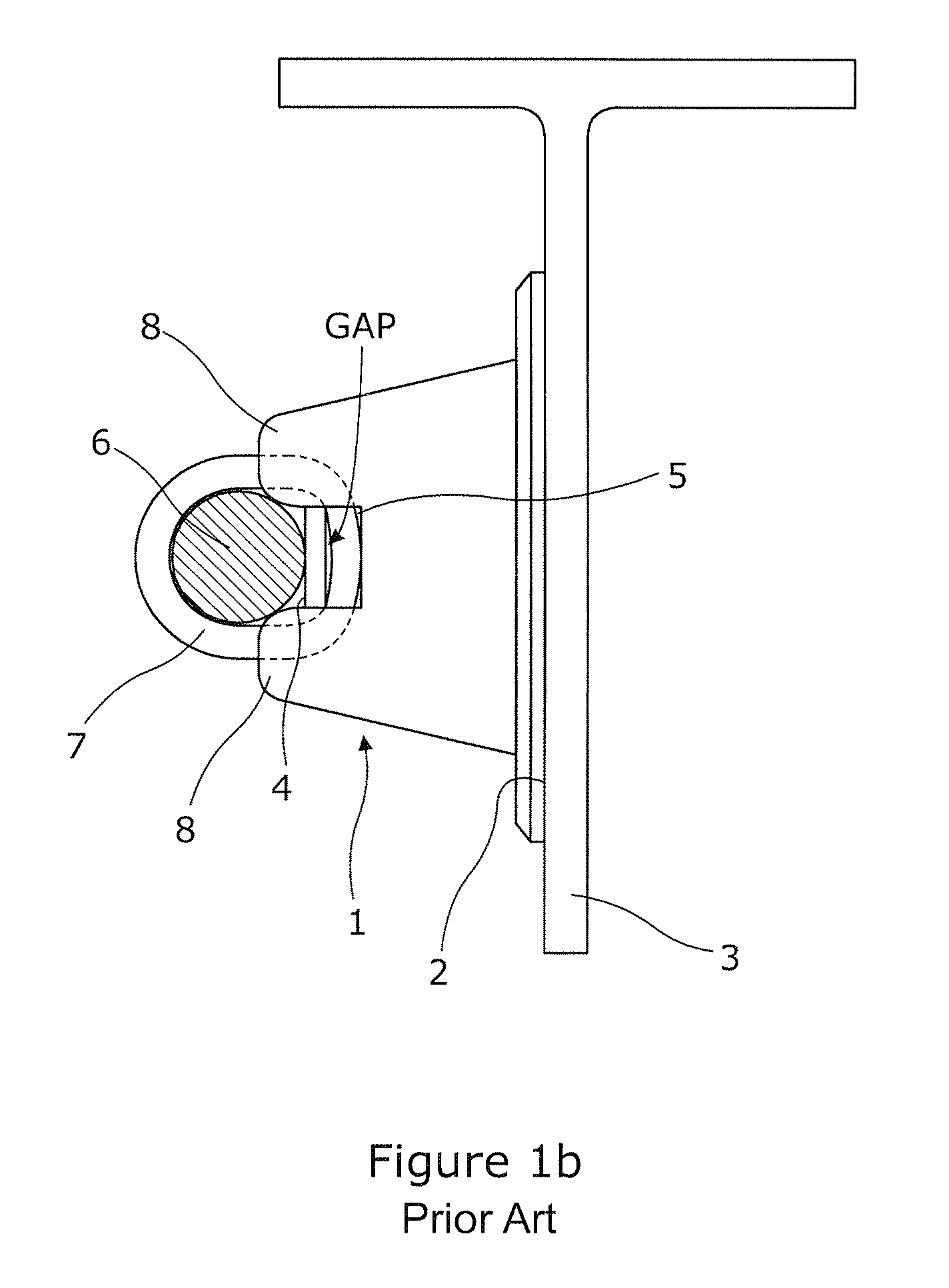Bracket for attaching an electrical cable to a vehicle
a technology for attaching brackets and electrical cables, which is applied in the direction of machine supports, transportation and packaging, and other domestic objects, can solve the problems of easy loosening of cables, and achieve the effects of reducing relative movement, less slack, and low friction coefficien
- Summary
- Abstract
- Description
- Claims
- Application Information
AI Technical Summary
Benefits of technology
Problems solved by technology
Method used
Image
Examples
first embodiment
[0055]FIGS. 3a and 3b show a bracket 1 according to the invention. It is similar to the prior art bracket of FIGS. 1a and 1b. The bracket 1 has a flat bonding face 2 at one end for attaching to a stringer 3 of the fuel tank. At the opposite end, the bracket has a generally square shaped cable mounting face 4. On each corner of the mounting face 4 is a locating bump 8. These locating bumps 8 provide abutment surfaces for the cable 6 to rest on or against, thereby ensuring the cable rests in a certain position on the bracket 1. On each side of the square face is a slot 5 for a cable-tie. The cable 6 is secured to the cable mounting face 4 by a cable-tie 7 looped around the cable 6 and cable mounting face 4 through two opposite cable-tie slots 5.
[0056]However, an important difference between the bracket of FIGS. 3a and 3b and the bracket of FIGS. 1a and 1b is that the bracket of FIGS. 3a and 3b also comprises a nodule 10 on the back of the cable mounting face 4. The nodule is in the sh...
second embodiment
[0058]FIGS. 4a to 4d show a bracket 1 according to the invention. The bracket 1 is of a different shape to the bracket of FIGS. 3a and 3b.
[0059]The bracket 1 has a head portion 11 at one end of the bracket and an arm portion 12 extending from the head portion 11 to an end portion 13 at the other end of the bracket 1.
[0060]The head portion 11 comprises a flat bonding face 2 for attaching to a stringer 3 of the fuel tank using adhesive. The bonding face 2 has a thickness of 2 mm and is in the form of a round-cornered rectangle. The dimensions of the rectangle are 20 by 30 mm. On the other side of the face 2, on the short edges of the rectangle of the head portion 11, two sloping walls 14 extend upwards. The walls 14 have a thickness of 2 mm. The walls 14 are sloped such that their height from the face 2 increases as they move away, from the head portion end of the bracket 1.
[0061]At the end of the rectangle of the mounting face 2 nearest the arm portion 12, the sloping walls 14 curve...
third embodiment
[0076]FIG. 8 shows two brackets 1 according to the invention. The brackets 1 of FIG. 8 are of a different shape to the brackets of FIGS. 3a and 3b or FIGS. 4a to 7b.
[0077]Each bracket 1 of FIG. 8 has a head portion 31 at one end of the bracket and an arm portion 32 extending from the head portion 11 to an end portion 33 at the other end of the bracket 1.
[0078]The head portion 31 comprises a flat bonding face 2 for attaching to a stringer 3 of the fuel tank. The bonding face 2 has the form of a rounded rectangle. On the other side of the face 2, a rounded triangular-shaped arm 34 extends out from the bonding face 2. The rounded triangle is symmetrical and has its short side connected to a long edge of the rectangle of face 2. The two long sides of the triangle 34 form the outline of the arm portion 32.
[0079]Extending between the triangular arm 34 and the reverse of the bonding face 2 is a right-angled triangle-shaped flange 35. The shortest side of the triangle flange 35 is connecte...
PUM
| Property | Measurement | Unit |
|---|---|---|
| width | aaaaa | aaaaa |
| width | aaaaa | aaaaa |
| width | aaaaa | aaaaa |
Abstract
Description
Claims
Application Information
 Login to View More
Login to View More - R&D
- Intellectual Property
- Life Sciences
- Materials
- Tech Scout
- Unparalleled Data Quality
- Higher Quality Content
- 60% Fewer Hallucinations
Browse by: Latest US Patents, China's latest patents, Technical Efficacy Thesaurus, Application Domain, Technology Topic, Popular Technical Reports.
© 2025 PatSnap. All rights reserved.Legal|Privacy policy|Modern Slavery Act Transparency Statement|Sitemap|About US| Contact US: help@patsnap.com



